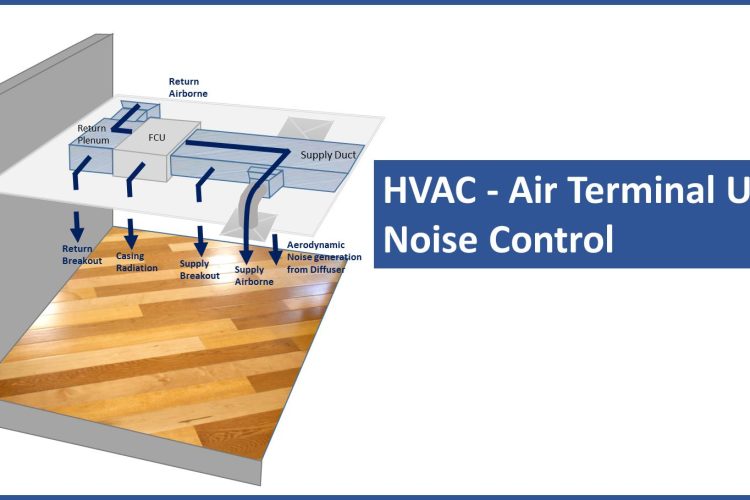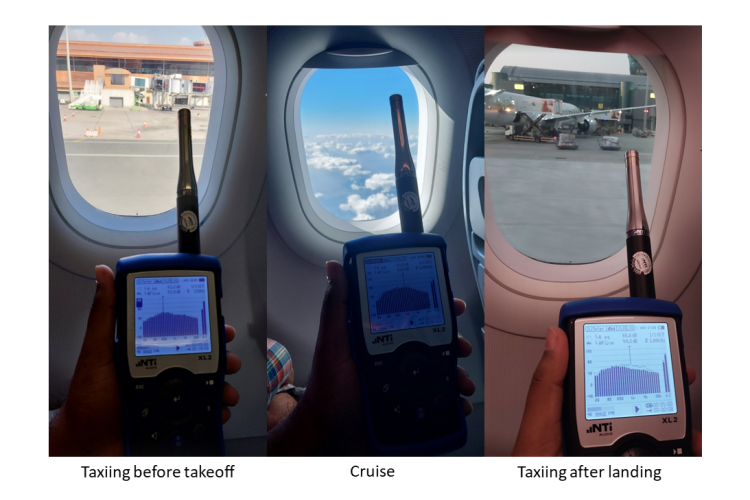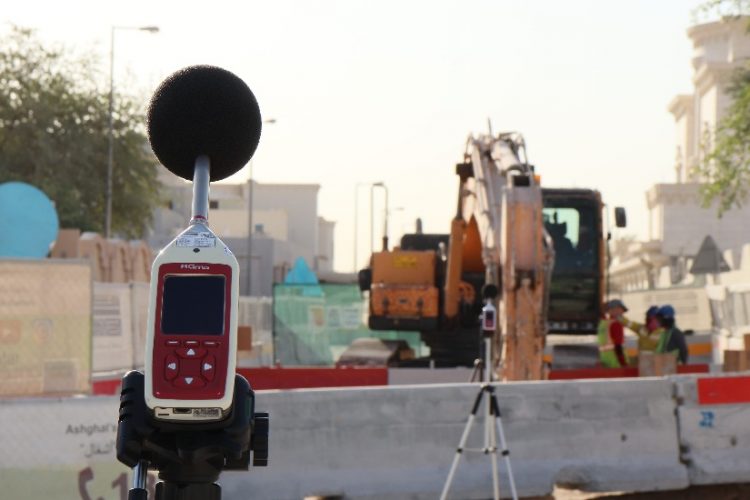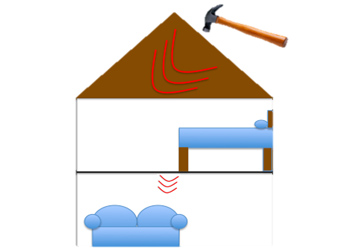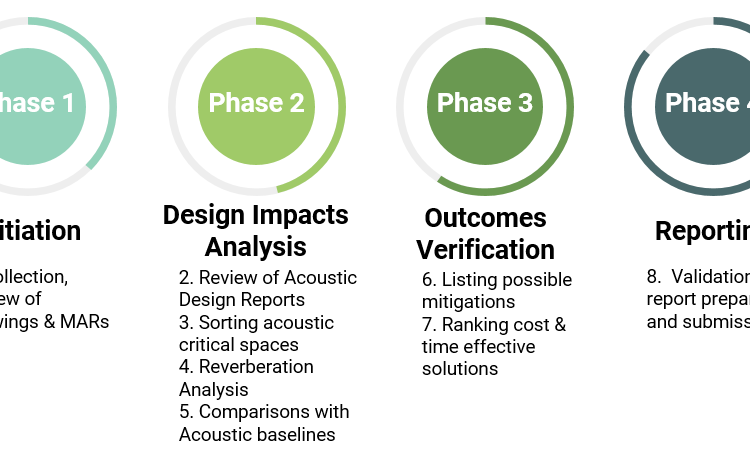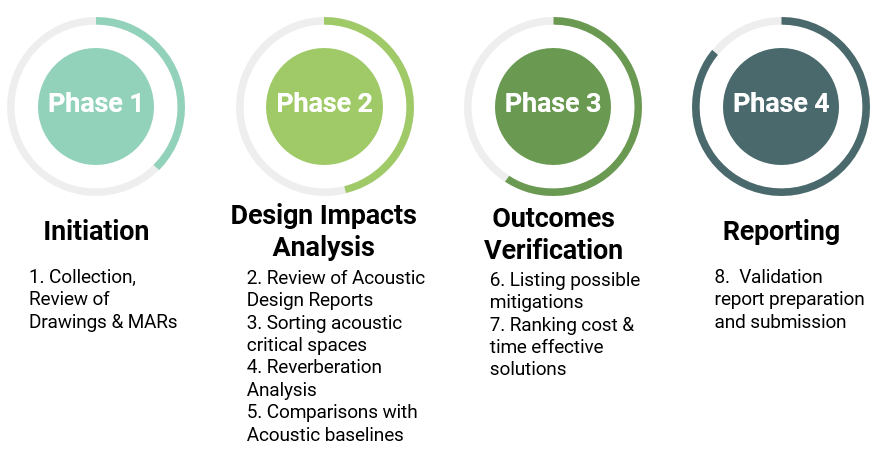
Summary:
- The Project is one the largest iconic stadium in the GCC
- Our team was assigned by the main contractor to assess potential design impacts/implications associated with the project team’s intent on removing suspended false ceiling from around 500 spaces predominantly due to schedule constraints in delivery.
- Conserve performed reverberation time analysis for typical occupancy and spectator spaces with design inputs and technical datasheets to identify acceptability of the deviations from the design. The analysis was carried out considering the room volume, sound absorption properties of spaces finish
- The outcomes are analyzed and recommendations of suitable acoustic treatment measures to maintain acoustical integrity of the occupancy spaces for spectator’s comfort are provided.
Problem Statement:
Project team’s proposal for the removal of false ceiling is mainly intended to push the delivery schedule ahead, but this plan comes with potential implications in HVAC Design (additional cooling load due to added volume), Acoustic comfort, Placement of fire-alarm and fire-fighting system, etc. Conserve is assigned to analyze potential design implications on MEP systems, however this article is specifically concentrating on Acoustic related parameters. Acoustic parameters resulting in a discomfort to occupants and spectators in hearing long ranged echoes with higher reverberation time than the predesigned. Considering the construction was progressing at a faster pace, any proposed acoustic treatment recommendations are to be cost effective in order to maintain a positive cost to benefit ratio.
Methodology:

CONSERVE’S APPROACH:
As stated on the methodology, the initiation phase is understanding the project design elements by site visits, reviewing drawings & approved material submittals and reviewing acoustic design report. Baselines for Reverberation time per space type as defined during the design as tabulated below:
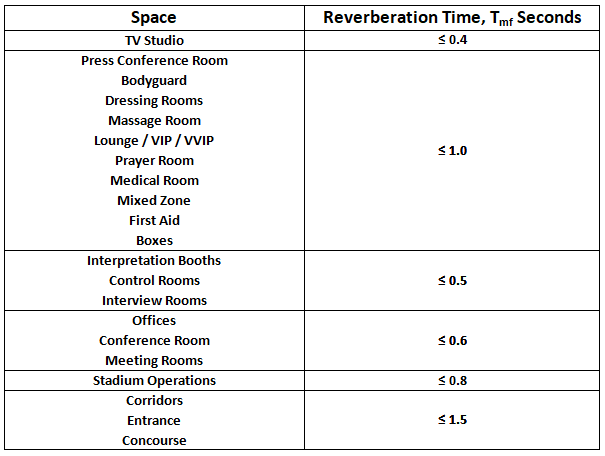
Technical Brief on Reverberation Time in simple terms:
WHAT IS REVERBERATION?
Reverberation is the persistence of the sound for a long time even after the source of the sound has stopped. To elaborate why this happens, if all the surfaces of the room are made of hard and reflective materials, the sound will bounce back and forth between the surfaces and takes a long time to decrease.
SO HOW IT IS MEASURED?
It is measured by reverberation time. The time that the reverberant sound takes to decrease by 60 decibels and this is denoted as RT60 or T60. Large rooms with sound reflective surfaces have longer reverberation times, while small rooms with sound absorptive surfaces have short reverberation times.
WHAT MAKES REVERBERATION ANNOYING?
Long reverberation deteriorates the clarity of speech. You might feel this in place like crowded large volume sized room, where you can’t clearly hear what the other person is conveying. As the space get accumulates with reverberation, it makes direct communication difficult. It is not good to blame the reverberation always, reverberation makes marvel in music symphonies, orchestra and concert halls. In these places, you should have high reverberation time for good music and sound effect.
Implications in Acoustic Performance:
Reverberation time within a space is directly proportional to the Volume (as provided below in the Sabine’s equation). Here in our case, when we remove false ceilings especially in bigger rooms the increase in volume is considerably high and have potential impact in its acoustic performance.

Where T is the reverberation time, V is the volume of the room, S is the total area of the room surfaces, α* is area weighted absorption coefficient of the room surfaces and m accounts for sound absorption.
The room spaces also lack the sound-absorbing effect of false ceiling tiles as it is exposed to smooth unpainted concrete. Due to high ceilings and reflective surfaces, these areas become reverberant, causing build-up of noise. Walls are provided with painted mineral wool (sound absorptive surface of NRC 0.5) which favors the reduction of reverberation time.
And these noises emitted from these sources travels through two major modes of transmission popularly known as,
Acoustic Validation:
Our scope of the project is to validate whether the painted mineral wool installation is sufficient for reverberation time reduction and whether it will compromise the reverberation increase effect due to false ceiling removal and finally whether these spaces will meet the design specified reverberation time. We have selected acoustically critical spaces for assessment and resulted with Hospitality Lounges didn’t meet required baselines.

Note: The space was designed with suspended metallic acoustic ceiling with 0.9 NRC. Upon removal, reverberation within the space become almost twice as in the earlier design.
Solution:
After listing down possible solutions and brainstorming with the contractor, we have arrived at adding 100 m2 of Acoustic Wall Panel. Proposed product which was already approved for the project in other applications and remaining stock after installations, hence avoiding any additional procurement or time constraints.
Does your room have larger volume, hard surfaces all around? Doubting about the sound quality of your Project in design or Construction phase? Do you have an acoustic discomfort in your existing facility? Conserve can assist you with practical and cost-effective solutions irrespective of the project location.Conserve Solutions will be happy to assist your projects. Our offices are located in India, UAE, Qatar, Saudi Arabia, Canada, United Kingdom, Egypt and Singapore.
For more information visit https://www.conservesolution.com/acoustic-consultancy/
Related Blogs
Author
Devanathan
"An acoustic engineer and project coordinator with over 2.5 years of experience in the acoustics field played a pivotal role in providing acoustic consulting services for over 50 projects across various sectors, including hotels, residential buildings, industrial plants, and airport terminals. His primary goal is to provide effective and feasible acoustic solutions to consultants and contractors in the AEC industry. "

